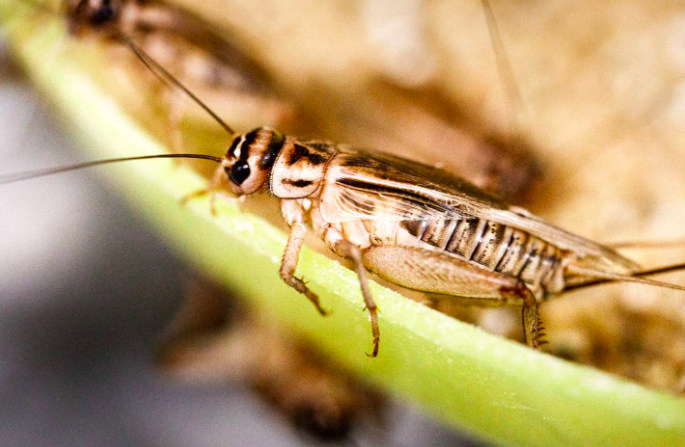Fatima Romero
Crickets are found in the ecosystem throughout Costa Rica, particularly Guanacaste, a province bordering Nicaragua to the north, which presents conditions that favor their reproduction.
Insects could be part of the answer to global hunger; understand why.
According to UN figures, by 2030, the forecast is that almost 670 million people will still suffer from hunger.
Could edible insects be part of the solution?

The study International Edible Insects Market prepared by the Foreign Trade Promoter of Costa Rica (Procomer), revealed that the production of insects is a great trade opportunity for the country.
For example, 45.2% of Costa Ricans are willing to consume these products, according to the 2019 Current Events Survey of the School of Statistics of the University of Costa Rica (UCR).
Likewise, 61.3% consider that the production of insect-derived foods will increase over time.
The UCR Guanacaste Headquarters started a project that seeks to formalize a protocol for producing crickets in Costa Rica, the institution reported on its website.
This initiative aims to promote the massive breeding of insects as a protein supplement for human and animal nutrition and, in this way, provide Guanacaste households with “an alternative system, simple, cheap and with high potential to be replicated,” say specialists.
CRICKET FLOUR
The first crops of edible insects in the UCR are in the Insect Museum, where various substrates are used for feeding crickets, such as oats, chicken, and rabbit food.
Entomos is the first company in Switzerland to raise and sell edible insects such as mealworms, crickets, and locusts as a more sustainable way of producing food.
In 2021, the Animal Health Service (Senasa) included mealworms and crickets in the list of exotic ornamental species, allowing the production and commercialization of insect-based products in Costa Rica.
Cricket flourHigh-fiber cricket powder-based cake made by students of the Food Engineering course at the UCR Guanacaste campus (Photo: Fabiola Andrade Villalobos).
According to specialists, cricket flour is one of the most complete protein sources; every 100 grams contains between 50% and 65% protein.
Thanks to its nutritional value and the high efficiency of its production, this raw material is considered a promising alternative for food worldwide.
“Even though the use of cricket flour has begun to be studied to know its properties, there are few companies in the country that have included this raw material in their recipes, so there is a great opportunity for innovation and market insertion,” said Ana María Quirós Blanco, a researcher at the Food Technology Research Center (CITA) and professor at the Guanacaste Campus.
Currently, the university professor is working with food engineering students to develop insect-based products, including a fried tortilla snack and a muffin-type snack.
Quirós Blanco assures that cricket protein has a nutritional profile comparable to other protein sources such as beef and pork, with the advantage that this production system requires less water, food, and space, thus representing a lower ecological impact.
With information from Bloomberg

